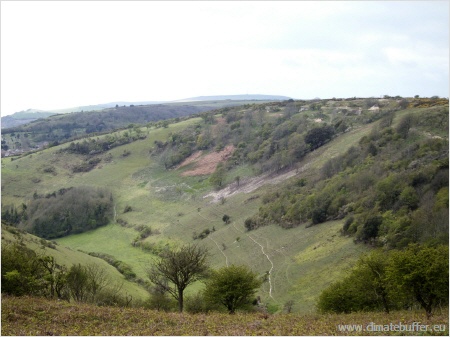Lessons Learnt
Climate change – communication
Communication with the community demands a different approach because of the uncertainty of climate change. How to deal with uncertainty? In the long term, the National Trust accepts loss of buildings including lighthouses and they do not compromise with the coast. To work with and not against nature. Long term planning is required to solve climate change related problems. To think and act in a wider context, to create partnerships and to involve the public. Coasts are good places to make people aware of climate change and its effects. To increase the awareness of people of the effects of climate change, the NT has organized events in a non-expensive and artistic way, letting people be part of the change. At Ventnor Downs, the NT involved the local community in the management of the property. Because of the rapid increase in Holm Oak growth that threatened to take over the best of the species-rich downs and the loss of the public’s view of the hills, the NT remained in close contact with the community to gain their support and inform them about proposed mitigation measures.

Ventnor
(Photo: Marthe Olthof, Natuurmonumenten)
Learning from others
It is always a good experience to see how another nature conservation organisation addresses their issues and manages their properties. Most interesting was the transition between mud-flats and ancient fresh water forest at Newtown Estuary. In Holland, these transitions are abruptly removed by dikes that protect inland areas. In areas without dikes, the most interesting and diverse sites exist, where Green-winged Orchid and other threatened species flourish.
Making room for natural processes
It was really impressive to see how the National Trust takes a step back and lets natural processes take their own course. It was quickly realised how difficult it is for knowledge organisations as we are, to change to more process based organisations.
Working with nature
Climate induced coastal erosion, especially on the impressive cretaceous cliffs, is even more dramatic and alarming than initially expected. Since 2002, on the Baltic islands of Møn (DK) and Rügen (D) there have been large coastal areas which represented a risk to walkers; overall the losses of coastal substance are about 300.000 m3 (Rügen) and 500.000 t (Møn). However, flooding and sea level rise are natural events which cannot be prevented, only managed. The NT accepts these realities. Occurrences were observed and documented to understand the basic processes, its effects as well as its magnitude. Only this way can ecosystem services be used and strategies adapted for coastal protection.
Public cooperation
Success is dependent on public cooperation. This can only be achieved by a change in values and awareness; a very laborious and long-term process (for many years) without the guarantee of success. The general public needs to be drawn into decision making and sometimes compromise measures must be taken:
- one method is to involve local members of the public as important volunteer mediators between locals and site managers, but they have to be intensively involved in both the project and policies.
- let facts speak for themselves could be effective: to raise awareness for coastal retreat, the NT uses the graphic example of the lighthouse of Orford Ness. Inevitably, it will sink into the water within the next 5 years. The NT will document and publish this process to bring the reality home to the public and to visualize the transition dramatically.
Land ownership
The very aspect of owning land which offers the opportunity for management and mitigation is an important point – including management of a mosaic of landscapes and habitats that extend beyond the immediate boundaries of the coastline.
Stakeholder involvement
Targeting mitigation work and involving key stakeholders is also important, particularly concerning future climate change impacts that are very difficult to predict and visualise. On this point, scenario modeling and presentations to help the general public visualise and understand the evolution of coastal change and impacts for future generations are very helpful.
The project started in 2010 and was finished in 2012.